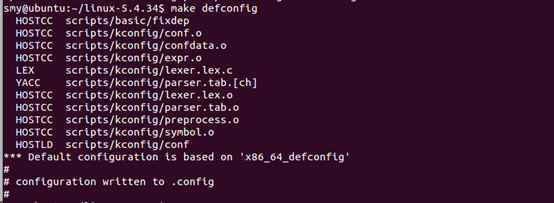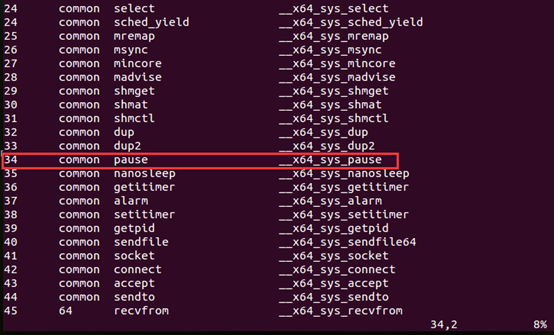一、实验要求:
- 找一个系统调用,系统调用号为学号最后2位相同的系统调用
- 通过汇编指令触发该系统调用
- 通过gdb跟踪该系统调用的内核处理过程
- 重点阅读分析系统调用入口的保存现场、恢复现场和系统调用返回,以及重点关注系统调用过程中内核堆栈状态的变化
二、实验步骤:
安装qemu:
sudo apt install qemu
安装必须的库:
sudo apt install build-essential libncurses-dev bison flex libssl-dev libelf-dev多线程下载:
axel -n 20 https://mirrors.edge.kernel.org/pub/linux/kernel/v5.x/linux-5.4.34.tar.xz

解压:
xz -d linux-5.4.34.tar.xztar -xvf linux-5.4.34.tar 
生成内核编译:
make defconfig

make menuconfig

# 打开debug相关选项
Kernel hacking --->
Compile-time checks and compiler options --->
[*] Compile the kernel with debug info
[*] Provide GDB scripts for kernel debugging [*] Kernel debugging
# 关闭KASLR,否则会导致打断点失败
Processor type and features ---->
[] Randomize the address of the kernel image (KASLR)
make -j$(nproc)
qemu-system-x86_64 -kernel arch/x86/boot/bzImage

#下载
axel -n 20 https://busybox.net/downloads/busybox-1.31.1.tar.bz2
tar -jxvf busybox-1.31.1.tar.bz2
cd busybox-1.31.1
#制作根文件系统
make menuconfig
#记得要编译成静态链接,不⽤动态链接库。
Settings --->
[*] Build static binary (no shared libs)
#然后编译安装,默认会安装到源码⽬录下的 _install ⽬录中。
make -j$(nproc) && make install

mkdir rootfs
cd rootfs
cp ../busybox-1.31.1/_install/* ./ -rf
mkdir dev proc sys home
sudo cp -a /dev/{null,console,tty,tty1,tty2,tty3,tty4} dev/

init脚本放到根文件系统目录下
#!/bin/sh
mount -t proc none /proc
mount -t sysfs none /sys
echo "Wellcome MyOS!"
echo "--------------------"
cd home/bin/sh
#权限
chmod +x init
find . -print0 | cpio --null -ov --format=newc | gzip -9 > ../rootfs.cpio.gz
#测试
qemu-system-x86_64 -kernel linux-5.4.34/arch/x86/boot/bzImage -initrd rootfs.cpio.gz

在/linux-5.4.34/arch/x86/entry/syscalls/syscall_64.tbl中查到我学号后两位34对应系统调用是sys_pause

测试代码:

跟踪端点部分如图:
